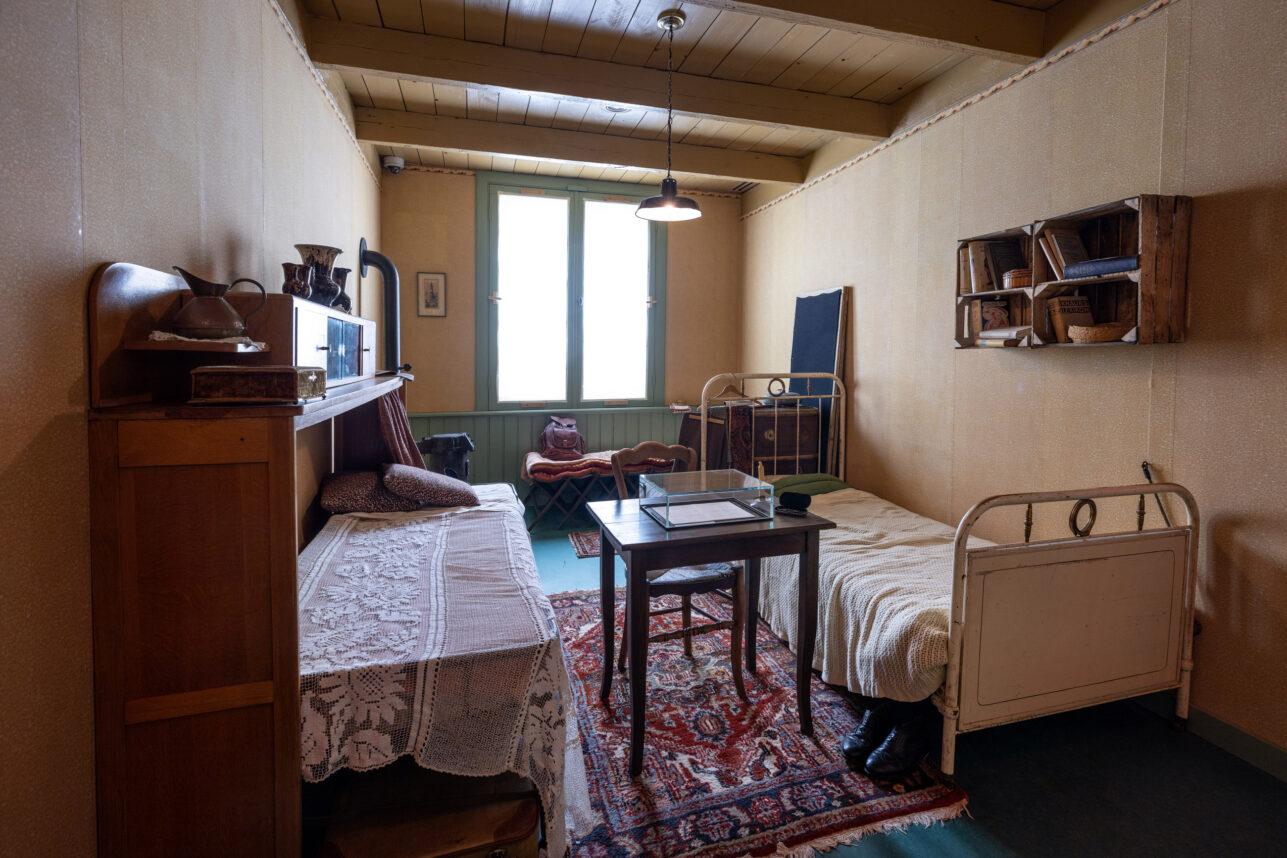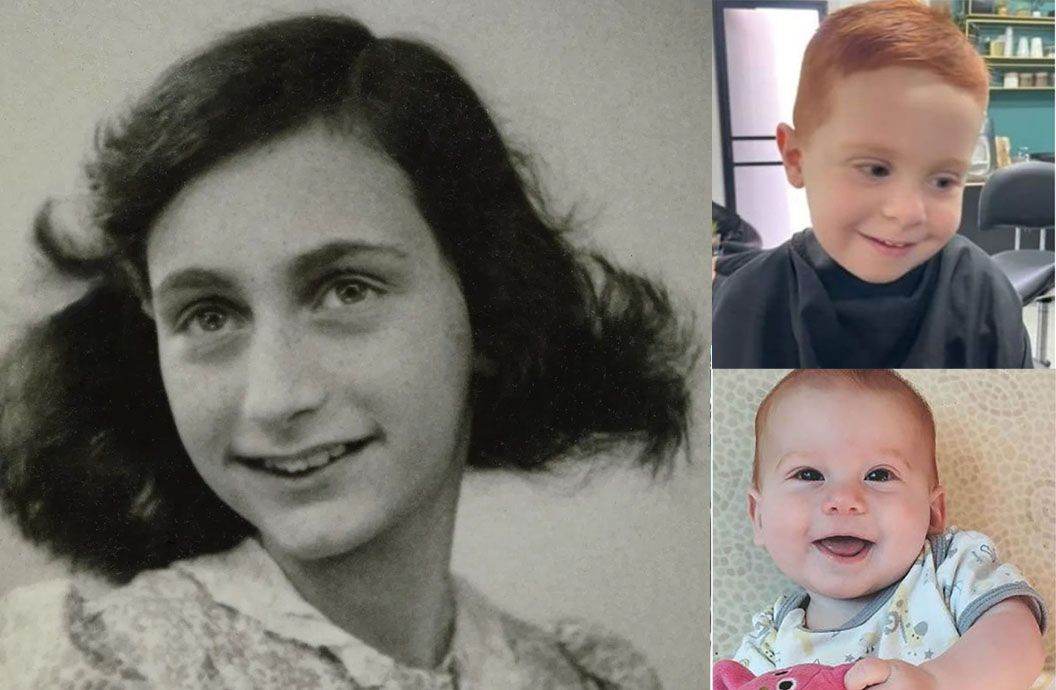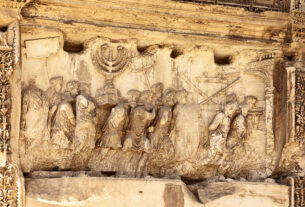The off-Broadway experience on everyone’s radar these days, surprisingly, is showing at the Center for Jewish History. In commemoration of the 80th anniversary of the death of Anne Frank, they have mounted an installation that includes a full-scale replica of the secret annex in Amsterdam where she, her family and a few others hid until they were betrayed by the Dutch and arrested by the Gestapo.

“Anne Frank: The Exhibition” was scheduled to close on April 30, 2025, but due to overwhelming demand, has been extended to October 31, 2025.
If the Anne Frank exhibit is the hottest place to be in Jewish culture, the coldest is most definitely in Israel, where the bodies of the red-headed Bibas brothers—Ariel and Kfir, a toddler and a baby, respectively—the youngest hostages taken by Hamas on October 7, were finally returned for burial. Their father, Yarden, was released on February 1, alive.
Grotesquely, even for monsters like Hamas, a coffin purportedly containing the body of their mother, Shiri, escorted back to Israel by the International Red Cross, did not include her remains. In a cruel bait-and-switch in the shark-infested ruin that is Gaza, Hamas inserted the body of an anonymous Palestinian woman—as if the Jews of Israel wouldn’t be able to figure that out.
Israel’s National Institute of Forensic Medicine soon determined that the body marked as belonging to Shiri Bibas shares none of the DNA of any of the hostages taken from Israel—either on October 7, or at any prior kidnapping. Shiri is still missing. Yarden, her husband, will have to attend two funerals—one for his sons, now; and the other for his wife, at some indeterminate time. There is no telling whether Hamas will ever locate or release her.
The people of Israel, still grieving over all those murdered, mutilated and raped on October 7, have reserved a special measure of agony for this family. Those two babies in their Batman pajamas have become symbols of Israel’s existential nightmare in the Middle East, and further evidence of the signature brand of barbarism that is the specialty of the people of Gaza—not just Hamas terrorists, but those “innocent” civilians who held Israelis captive and provided as much material support as any other people’s army in human history.
The people of Israel, still grieving over all those murdered, mutilated and raped on October 7, have reserved a special measure of agony for this family. Those two babies in their Batman pajamas have become symbols of Israel’s existential nightmare in the Middle East, and further evidence of the signature brand of barbarism that is the specialty of the people of Gaza.
There is no innocence in Gaza. The fact that not a single Palestinian deigned to save a Jewish life, not one Gazan wished to be a hero rather than an accomplice, is as self-condemning an indictment of collective guilt as can be.
Yad Vashem, Israel’s Holocaust Museum, has 14,000 names inscribed on its Wall of Honor in the Garden of the Righteous—acknowledging those non-Jewish individuals who performed selfless acts of heroism and sacrifice in saving Jewish lives.
No such humanitarian honor inspired Gazans, apparently. No one wished to be valorized or remembered in this way. The allure of martyrdom for the Palestinian cause is too strong; the empathy for Jewish neighbors too nonexistent.
This week felt like a time warp in Jewish history. We were reminded of the millions of children whose tribal attachments to the Jewish people (1.5 million in the Holocaust alone) caused an irreversible pause in their rites of passage.
Despite the legacy of her diary, which has been published in more than 70 languages worldwide, Anne Frank never got the chance to become the writer she was destined to be. She wrote but the one book, cobbled together by her father, Otto, who survived the Holocaust and then desecrated his daughter’s memory (and took liberties with her artistic intentions) by omitting passages that revealed her anger at the world outside the attic, along with her awareness that being Jewish sealed her fate in her native Germany, and in her adopted Dutch homeland.
The justifiably enraged teenager was, instead, turned into a secular saint—universalized as an every-girl cautionary tale, a precocious observer of humanity at its worst. And, yet, in reading the diary, one improbably learns that this Jewish girl in crisis loved Christmas trees, Hollywood movies and the Dutch royal family. Her father wanted the diary to be read as a humanist’s bible: suffering is suffering. Whatever historical torments Jews have endured is not worthy of its own story.
The Broadway adaptation of the diary, and the film version, paint an even fuzzier picture of Jewish particularity.
Otto Frank was determined that Anne’s final word on humanity be a verdict that everyone could smugly live with, even if reciting it out loud was an obscene injustice given all that the girl had experienced. “In spite of everything, I still believe that people are really good at heart.” Plucky, but nauseating, and taken entirely out of context. With an editor’s red pencil, the father ensured that his daughter’s words would reverberate throughout history as an anthem of eternal optimism.
With an editor’s red pencil, the father ensured that his daughter’s words would reverberate throughout history as an anthem of eternal optimism. But it remains a singular lie. Among other things, Anne never met a Gazan.
But it remains a singular lie. Among other things, Anne never met a Gazan.
Meanwhile, many decades later, far removed from the Holocaust that claimed two out of every three Jews of Europe, two red-haired Jewish brothers, born in a Jewish state, nonetheless lived in a home that, paradoxically, had a safe room serving the same purpose as Anne’s secret annex. She survived the attic but could not outlast Bergen-Belsen. The Bibas Brothers lived out the final days of their shortened lives confined in the darkness of a Gazan tunnel. They were, according to the IDF, murdered with the terrorists’ bare hands.
Would they have grown to become Jewish avengers or peacemakers, decorated IDF soldiers or start-up entrepreneurs, humble farmers or the voices of their generation? Like the European Anne Frank, these two sabras missed their chance to leave their marks other than as Jewish martyrs—symbols of antisemitism at its most inhuman and cruel.
Anne Frank’s diary, unredacted, revealed conflicts with her older sister Margot. She had no way of knowing that 80 years after her death, she would forever be linked—in the hearts and memories of every decent human being —to two younger baby brothers.
What we would now give to read what she might have written about them: the blank page of the most famous literary teenager in the world, and those boys of red hair, with their futures denied.
Thane Rosenbaum is a novelist, essayist, law professor and Distinguished University Professor at Touro University, where he directs the Forum on Life, Culture & Society. He is the legal analyst for CBS News Radio. His most recent book is titled “Saving Free Speech … From Itself,” and his forthcoming book is titled, “Beyond Proportionality: Israel’s Just War in Gaza.”




